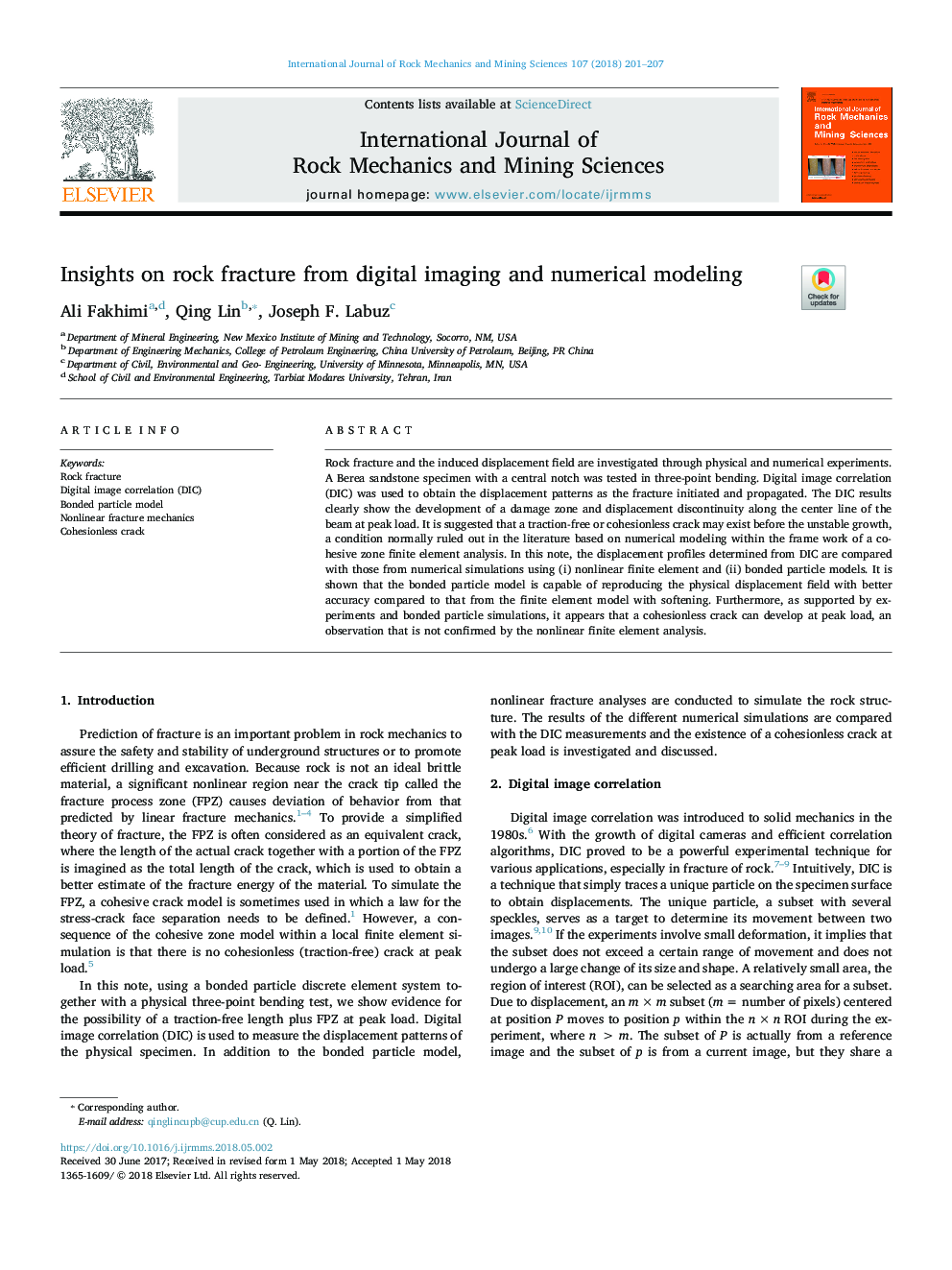| Article ID | Journal | Published Year | Pages | File Type |
|---|---|---|---|---|
| 7206163 | International Journal of Rock Mechanics and Mining Sciences | 2018 | 7 Pages |
Abstract
Rock fracture and the induced displacement field are investigated through physical and numerical experiments. A Berea sandstone specimen with a central notch was tested in three-point bending. Digital image correlation (DIC) was used to obtain the displacement patterns as the fracture initiated and propagated. The DIC results clearly show the development of a damage zone and displacement discontinuity along the center line of the beam at peak load. It is suggested that a traction-free or cohesionless crack may exist before the unstable growth, a condition normally ruled out in the literature based on numerical modeling within the frame work of a cohesive zone finite element analysis. In this note, the displacement profiles determined from DIC are compared with those from numerical simulations using (i) nonlinear finite element and (ii) bonded particle models. It is shown that the bonded particle model is capable of reproducing the physical displacement field with better accuracy compared to that from the finite element model with softening. Furthermore, as supported by experiments and bonded particle simulations, it appears that a cohesionless crack can develop at peak load, an observation that is not confirmed by the nonlinear finite element analysis.
Keywords
Related Topics
Physical Sciences and Engineering
Earth and Planetary Sciences
Geotechnical Engineering and Engineering Geology
Authors
Ali Fakhimi, Qing Lin, Joseph F. Labuz,
